The Electric Fan
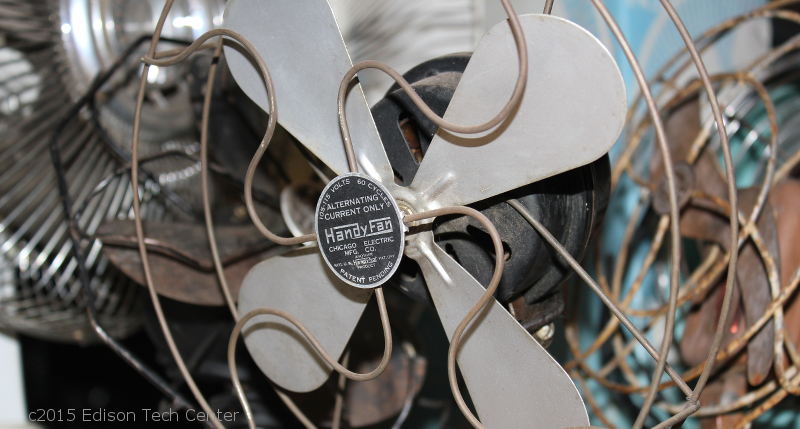
The fan is often overlooked in history but it has played an important role in technological development.
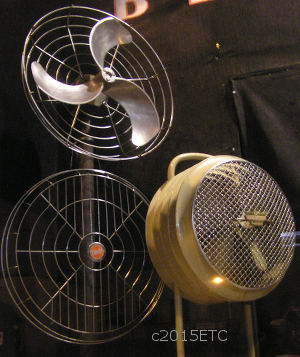
|
The electric fan was one of the most important electric inventions of all time. The fan is a
building block of other more advanced technologies. Fans are necessary in computers, lasers, large LED lights,
petrol and electric automobiles, the space station and countless other things. The fan as used in HVAC systems allows humans to build
giant or underground buildings. It would be hard to imagine a world without the electric fan!
The electric fan has blades similar to a water or steam turbine. A DC
or AC motor drives a rotating shaft. Sizes of fans have gotten
much smaller and lighter over the years. As engineers improved
the electric motor and blade design they figured out how to get more performance out of a
design that uses less copper and steel.
Left: The Edison Tech Center has hundreds of fans from all the periods in electrical history, including the latest
Dyson fans.
|
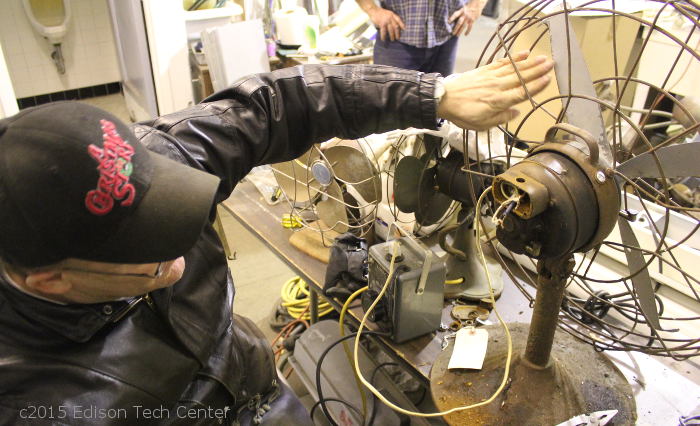
Above: old fans had heavy large motors. Rick DeLair tests a historic fan at the Edison Tech Center.
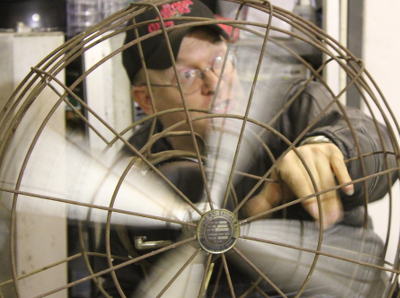
|
Motor Size:
Older fans used silk and cotton insulation around the copper windings
in the motor. Enamel replaced cotton and allowed for much more
compact windings. Early fans were made with heavy iron/steel
bodies and cages were designed to protect the expensive blades, not
protect fingers.
Left: Despite the huge motor and aluminum blades Rick is able to stop the
fan with his fingers without injury. A modern fan with the same power would have a motor
80% smaller.
|
Below: new enamelled wire allows for tighter coils in the motor


|
History
The first electric fan was made in 1886 by Schuyler Wheeler. Early fans
were all DC powered. After the 1890s fans with AC motors were produced.
In the late 1920s GE released a design which had overlapping blades,
which made fans much more quiet. As the decades passed other
materials like nylon and wood were used in the designs. There
were more variations in color and style after the 20s as well, before
this fans only came in black. In the 1950s air conditioning
gradually replaced table fans.
Electric Fans are a vital part of computers as they not only blow cool
air into cabinets where microchips are but they can come in small sizes
to cool individual chips. Powerful LED lamps require fans to cool
the electronics.
Left: an early fan with overlapping blades, this greatly increased the performance
without increasing energy consumption.
|

|

|
Left: War of the fans... General Electric and Westinghouse dominated the electric motor
market however other brands like Gray Bar, Robins and Myers managed to survive and innovate in the
early 20th century.
|

Above: a patent for an 1893 Wheeler fan, notice the huge motor with small fan blades - an inefficient start.
|
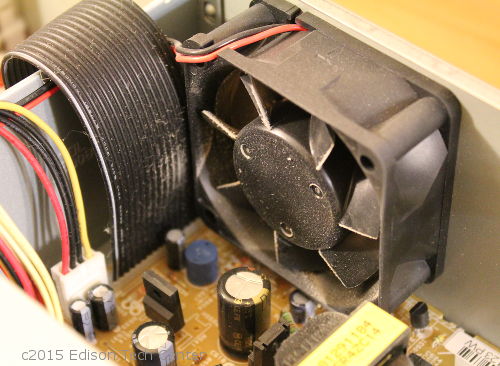
Above: typical computer fan, these are often made with pancake motors.
|
Modern Fans:
Modern fans are made primarily with plastic and much less materials. The use of rare-earth elements like cobalt-iron alloys in motor magnets
allows some high end fans to be extremely small and powerful.
Dyson has lead the pack in modern fan design. The "Airblade" is now replacing standard blowers in
bathrooms. They now have
bladeless fans >
Further Reading
A Brief History of Fans from Fan Collectors >
More on Electric Motors >
Sources:
Related Topics:
Article by M.W. and Steve Rockwell
Sources:
A Brief History of Fans, Fancollectors.org
Answers.com
Mitsubishi Electric
Photos:
Edison Tech Center











